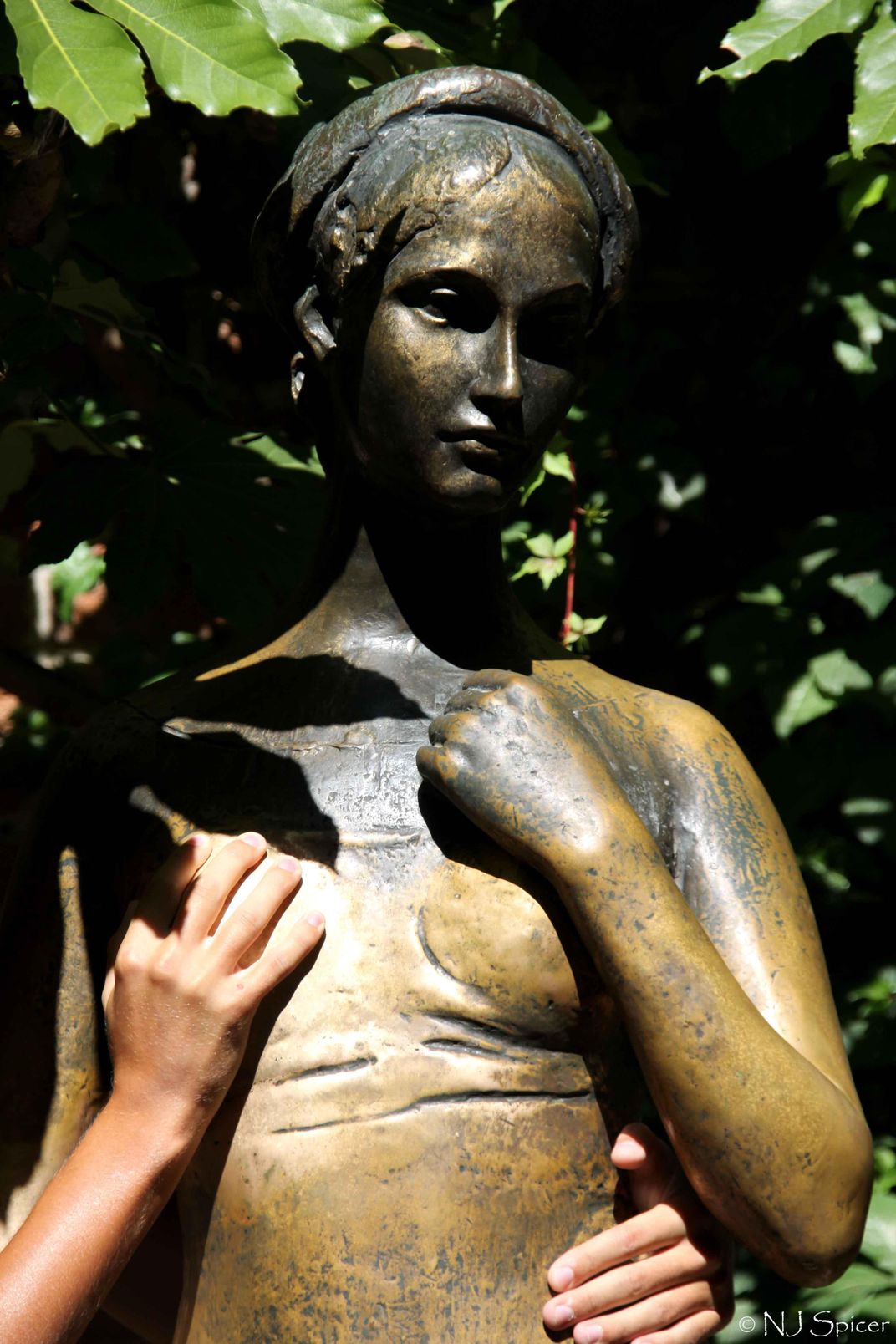In the Fair City of Verona, Star-Cross’d Lovers Want to Believe in ‘La Casa di Giulietta’
The number of visitors to this self-proclaimed Shakespearean “city of love” typically swells during the week around Valentine’s Day
:focal(2611x1282:2612x1283)/https://tf-cmsv2-smithsonianmag-media.s3.amazonaws.com/filer/b2/9a/b29ac7d8-a683-4625-bc75-a464a8e92980/gettyimages-898116708.jpg)
William Shakespeare never set foot in the northern Italian city he called “fair Verona.” Or at least not the William Shakespeare who we believe wrote the play Romeo and Juliet, first published in 1597 and first performed perhaps a year or two earlier. Fictional characters that they are, Romeo Montague and Juliet Capulet may be the world’s best-known lovers; much less renowned are Tristan and Isolde, Lancelot and Guinevere, Antony and Cleopatra. And need we note that none of these romantic couples lived happily ever after?
Indeed Shakespeare’s play concluded thus: “never was a story of more woe than this of Juliet and her Romeo.” Nevertheless the city of Verona has discovered more dough than woe in the tale of these fictional “star-crossed lovers.” Some two million visitors descend each year on Verona, and many of them want to visit “La Casa di Giulietta,” a 14th-century Gothic palace and later an inn, which has been repackaged as Juliet’s House. Not surprisingly, the number of visitors to this self-proclaimed “city of love” typically swells during the week around Valentine’s Day.
La Casa di Giulietta had always belonged to the Dal Cappello family until purchased by the City of Verona in 1905. Cappello is close enough to Capulet that there’s a semblance of credibility to the scene. And there is some evidence that Shakespeare based his play on two star-crossed lovers from Siena, some 200 miles down the road from Verona. Certainly the hundreds of thousands who visit Juliet’s House each year want to believe that love is in the air, on the walls (upon which they scrawl graffiti), and even between the bricks (into which they stash love notes). Beliefs in the power and magic of love are widespread in world folklore.
“Love springs eternal” is not a Shakespearean line, but it sounds like it could have been. Shakespeare gave Juliet’s house an upper window (often interpreted as a balcony) from which she utters one of the play’s best-known lines, “O Romeo, Romeo, wherefore are thou Romeo?” Accordingly, the entrepreneurs of Juliet’s House added their own balcony in 1936, albeit one that was assembled from a 17th-century stone sarcophagus and attached to one of the exterior walls.
One of the prized pieces of furniture inside Juliet’s House—albeit one that’s only 50 years old—is Juliet’s bed from the 1968 film version of Romeo and Juliet. Wikipedia lists more than 40 direct versions of Shakespeare’s play for film and television, and another hundred in which the story is adapted, spoofed or referenced—from the musical West Side Story (1961, and winner of no fewer than ten Academy Awards) to the zombie-filled Romeo & Juliet vs. The Living Dead (2009, and winner of none).

Juliet’s bed notwithstanding, the house’s most popular feature is the bronze statue of Juliet, first added to the courtyard in 1972. Unfortunately, so many tourists were leaning on the statue with one hand on its right breast that Juliet’s right arm fractured in 2014, requiring the entire statue to be replaced with a replica. Rubbing the statue’s right breast is supposed to bring better fortune for those—both male and female—who have been unlucky in love. Comparable customs occur on the private parts of male statues in both Paris and New York, where bronze penises shine like gold, thanks to countless caresses.
Of course, it’s not just a statue’s explicitly sexual features that attract the rubbing of strangers. Folklorist Simon J. Bronner in his 2012 book Campus Traditions; Folklore from the Old-Time College to the Modern Mega-University compiled an impressive list of statuary protuberances rubbed by students for good luck: the noses of John Hay at Brown University, Abraham Lincoln at the University of Illinois, and Warner Bentley at Dartmouth College; and the feet of Sul Ross at Texas A&M University and John Harvard at his namesake university. Observing that both noses and feet have phallic associations, Bronner notes how “ritualized touch has magical associations, especially with producing fertility and growth.”
To all of this Shakespeare might have commented (as in Hamlet’s soliloquy), “Ay, there’s the rub,” but there may be an even better lesson from Romeo and Juliet itself. The Valentine’s Day holiday brings a gazillion cards, chocolates, clothing and flowers, many at premium prices, often for the value of the brand name itself. “What’s in a name?” Juliet asked. “That which we call a rose by any other word would smell as sweet.”
A version of this article was originally published in the online magazine of the Smithsonian Center for Folklife and Cultural Heritage.
/https://tf-cmsv2-smithsonianmag-media.s3.amazonaws.com/accounts/headshot/James_Deutsch.jpg)
/https://tf-cmsv2-smithsonianmag-media.s3.amazonaws.com/accounts/headshot/endnotes-gallery-19.jpg)